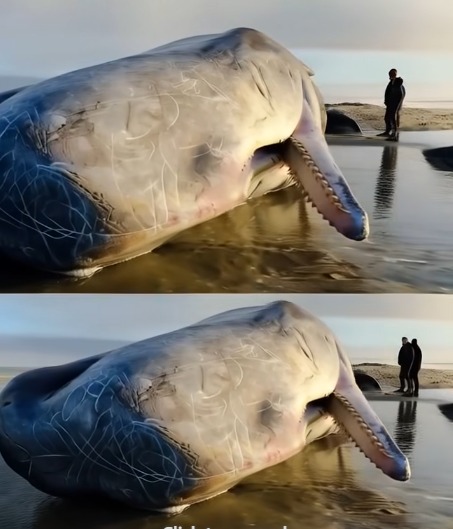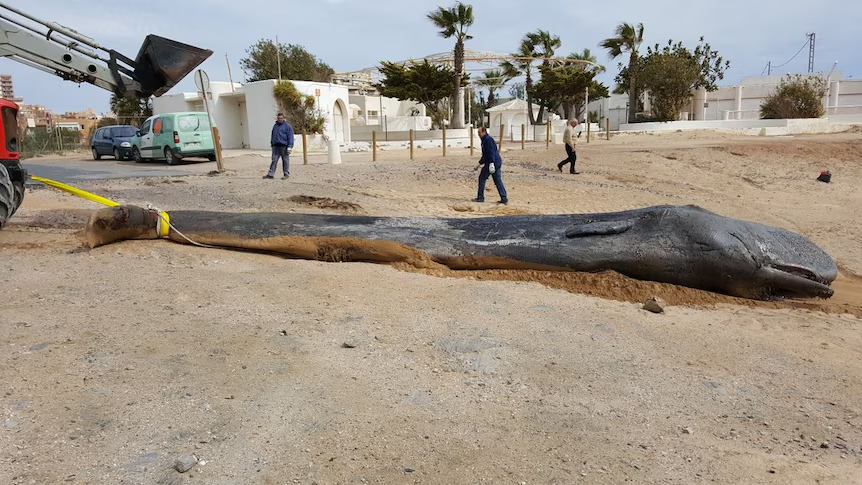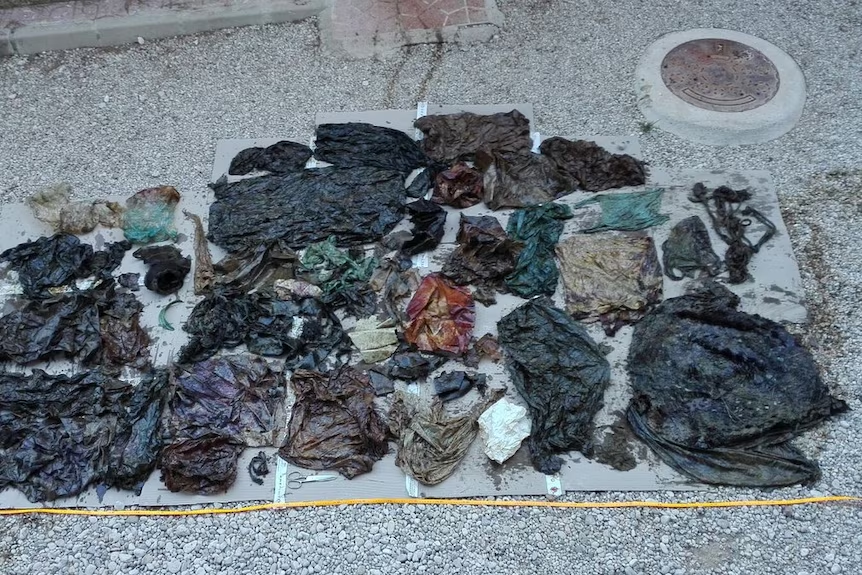In a disturbing illustration of our oceans’ plastic crisis, a juvenile sperm whale tragically perished off the coast of Spain, its body blocked with nearly 30 kilograms (64 pounds) of human refuse. This occurrence, uncovered during a necropsy, underscores the catastrophic toll pollution is taking on marine giants.
 The Fateful Discovery
The Fateful Discovery
In February, a roughly 10‑meter-long young sperm whale washed ashore near Cabo de Palos, Murcia, nestled by a lighthouse. Local rescuers from the El Valle Wildlife Recovery Centre performed a detailed exam, only to discover nearly 29 kg of garbage lodged in its digestive tract. Among the debris were plastic bags, raffia straw sacks, industrial ropes, fishing nets, and even an empty drum.
Despite its massive size, this whale weighed only around 7 tonnes—far lighter than a healthy adult male, which typically reaches up to 45 tonnes
Cause of Death: Internal Infection
Veterinarians believe the whale succumbed to peritonitis—an inflammation of the abdomen’s lining—triggered by a blocked and ruptured digestive system. Unable to digest or expel the dense mass of plastic and debris, the whale’s internal organs became weakened and inflamed, ultimately proving fatal .
What’s Inside: A Closer Look
During dissection, the ripped belly of the whale revealed a shocking assortment of human-generated waste. Plastic shopping bags, jerry cans, thick ropes, net fragments, and raffia sacks were all recovered. A Twitter post by Murcia conservation officials graphically showcased the contents laid bare.

Researchers emphasized this was far from a rare occurrence. The sheer volume of plastic in the seas—estimated at millions of tonnes each year—makes such tragedies increasingly likely .
Why Sperm Whales Are Vulnerable
Sperm whales are deep‑diving marine predators, visiting depths of nearly 1,000 meters to feed primarily on squid. At 10 meters in length, juveniles like this one primarily consume squid, octopus, shrimp, crabs, fish—and occasionally, inadvertently, plastic
They swallow whatever is in their path, including drifting bits of plastic and tangled debris, often without detection until it’s too late.
Global Context: A Growing Trend
This heartbreaking find isn’t isolated:
- In Indonesia (November 2018), another 30‑ft sperm whale was found with 6 kg (13 lb) of plastic cups, bottles, bags, flip‑flops, and string
- In the Philippines (March 2019), a Cuvier’s beaked whale was discovered dead with over 40 kg (88 lb) of plastic—bags, rice sacks, and more—filling its stomach
- In Thailand (June 2018), a dying pilot whale was found with 8 kg of plastic—80 bags—blocking its gut
These cases reflect a worrying pattern: top ocean predators suffering and dying because of human trash.
Shock and Awareness
The Spanish whale’s death prompted a rapid response from Murcia’s regional government. Led by Consuelo Rosauro, Director‑General for the Environment, Murcia launched a wide campaign to curb marine plastic: public service announcements, beach clean‑ups, litter‑free initiatives, and educational outreach
Rosauro stated:
“The presence of plastics in seas and oceans is one of the greatest threats to wildlife worldwide, since many animals become entangled or ingest such amounts that it leads to their deaths”
Her focus is a dual strategy: direct cleanup drives and citizen consciousness-raising.
Influences from Media
Global attention to marine plastic has surged since BBC’s Blue Planet II aired scenes of a whale calf killed by plastic. Narrator David Attenborough’s emotional warning—plastic must be reduced or marine life faces centuries of impact—galvanized public opinion
This programming sparked real-world action, including the UK’s 5‑pence plastic bag charge, credited with slashing usage by 80%
Can Change Happen?
The signs are encouraging. Environmental policies, such as bag fees and bans on single‑use plastics, are making a tangible difference:
- England’s plastic bag levy reduced usage sharply
- The EU and local Spanish authorities continue pushing anti- litter campaigns through the Murcia initiative .
Public engagement, legislation, and corporate responsibility now converge to tackle the issue.
What We Can Learn
This young sperm whale’s death is a global wake-up. A few takeaways:
- Magnitude of the problem: Millions of tonnes of plastic enter oceans annually, harming animals at every level.
- Scale of impact: Entire whale species, birds, turtles, and fish are ingesting harmful trash daily.
- Need for awareness: Broad media exposure and campaigns mobilize society toward solutions.
- Policy works: Bag fees, ban on single-use plastics, and cleanup programs demonstrate positive trends.
- Collective responsibility: Government, companies, NGOs, and individuals all share a duty to protect marine ecosystems.
Moving Forward: What You Can Do
While it may feel overwhelming, individual and local actions carry weight:
- Reduce your plastic use: skip single-use bags, straws, and bottles.
- Participate in clean-ups: join community or beach cleanup events.
- Advocate for legislation: support bans or fees on disposable plastics in your region.
- Educate others: share stories like this whale’s to spread awareness.
- Choose sustainably: seek products with minimal or recyclable packaging.
Conclusion
The young sperm whale discovered in Murcia remains a tragic symbol of marine plastic pollution. Nearly 30 kg of garbage—ranging from net fragments to drums—choked its digestive system, causing a fatal infection. Yet, shining through this tragedy is a spark of hope: awareness campaigns, regulatory changes, and global initiatives are taking root.
These efforts echo David Attenborough’s plea: unless humanity refrains from flooding oceans with plastic, marine life could be contaminated for centuries. This whale’s fate—and so many like it—should spur us to reshape habits, champion responsible policy, and safeguard our extraordinary blue planet. The time to act is now.


